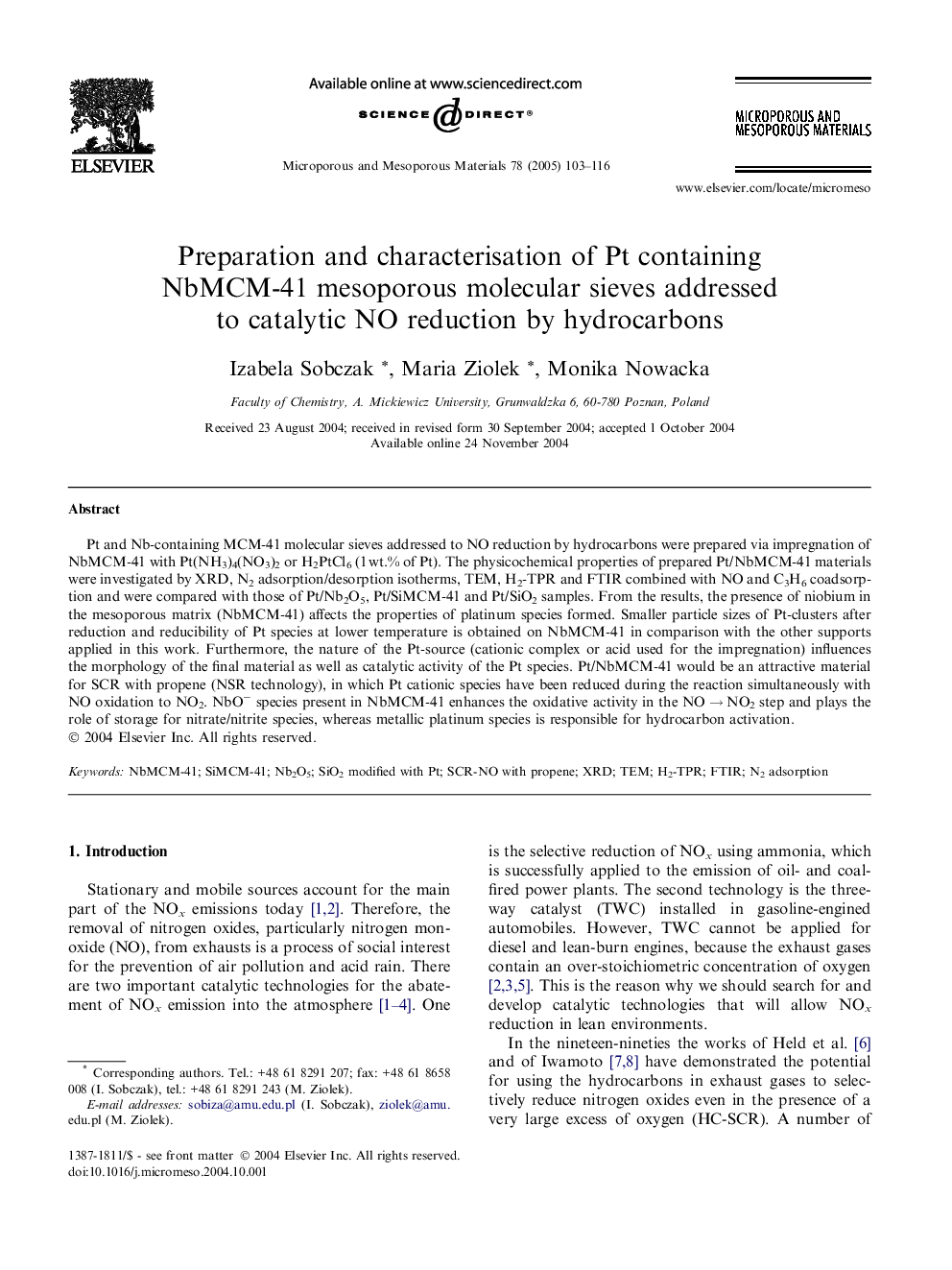| Article ID | Journal | Published Year | Pages | File Type |
|---|---|---|---|---|
| 9617825 | Microporous and Mesoporous Materials | 2005 | 14 Pages |
Abstract
Pt and Nb-containing MCM-41 molecular sieves addressed to NO reduction by hydrocarbons were prepared via impregnation of NbMCM-41 with Pt(NH3)4(NO3)2 or H2PtCl6 (1 wt.% of Pt). The physicochemical properties of prepared Pt/NbMCM-41 materials were investigated by XRD, N2 adsorption/desorption isotherms, TEM, H2-TPR and FTIR combined with NO and C3H6 coadsorption and were compared with those of Pt/Nb2O5, Pt/SiMCM-41 and Pt/SiO2 samples. From the results, the presence of niobium in the mesoporous matrix (NbMCM-41) affects the properties of platinum species formed. Smaller particle sizes of Pt-clusters after reduction and reducibility of Pt species at lower temperature is obtained on NbMCM-41 in comparison with the other supports applied in this work. Furthermore, the nature of the Pt-source (cationic complex or acid used for the impregnation) influences the morphology of the final material as well as catalytic activity of the Pt species. Pt/NbMCM-41 would be an attractive material for SCR with propene (NSR technology), in which Pt cationic species have been reduced during the reaction simultaneously with NO oxidation to NO2. NbOâ species present in NbMCM-41 enhances the oxidative activity in the NO â NO2 step and plays the role of storage for nitrate/nitrite species, whereas metallic platinum species is responsible for hydrocarbon activation.
Related Topics
Physical Sciences and Engineering
Chemical Engineering
Catalysis
Authors
Izabela Sobczak, Maria Ziolek, Monika Nowacka,
